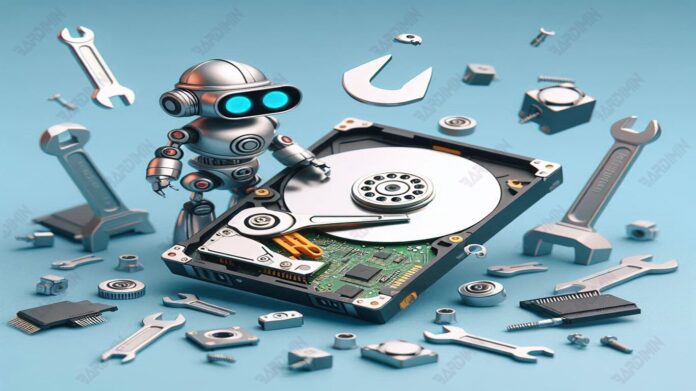Solid State Drive (SSD) is a data storage device that uses NAND-based flash memory to store and access data quickly.
Unlike Hard Disk Drives (HDDs) that use magnetic disks and moving read/write heads, SSDs have no moving parts, making them more resistant to physical shocks and faster in data access.

Advantages of SSDs over HDDs:
- Speed: SSDs have much faster access and data transfer times than HDDs. This is due to the absence of moving components in the SSD so that the data can be accessed directly from the memory chip.
- Durability: Because it has no mechanical parts, SSDs are more resistant to shocks and vibrations, making them more reliable in mobile situations or devices that are frequently moved.
- Power Consumption: SSDs generally use less power than HDDs, which can help extend the battery life of mobile devices such as laptops.
- Size and Weight: SSDs are typically smaller and lighter than HDDs, allowing for a slimmer and lighter device design.
- Silence: Because it has no moving parts, SSDs operate silently, in contrast to HDDs that can produce sound when the platter rotates and the read/write head moves.
Why Can SSDs Fail?
Although Solid State Drives (SSD) are known for their speed and reliability, they can still fail. SSD failures can be caused by a variety of factors, including problems with electronic components, overuse, firmware errors, overheating, and failures in the Power Loss Protection (PLP) system. Each of these causes can affect the performance and lifespan of the SSD, and potentially lead to data loss.
Top Causes of SSD Failure
1. Excessive Use
- Explanation: Each SSD has a limit on the amount of data that can be written, known as terabytes written (TBW). TBW determines how much data can be written to an SSD before it reaches the end of its life.
- Example: Imagine the use of SSDs in high-activity servers, such as database servers or web servers. Excessive write activity can reduce the lifespan of the SSD.
- Signs: Performance decreases, read/write speed slows down.
2. Failure of Electronic Components on SSDs
Failure of electronic components is another factor that can cause SSDs to not function properly. Here are some related points:
- Damage to the Controller
- Explanation: The controller is an important part of SSDs that governs data access and NAND cell management.
- Example: If the controller is damaged, the SSD may not be detected by the system.
- Signs: SSD does not appear in BIOS or operating system.
- Damage to NAND Chips
- Explanation: NAND chips store data in the form of memory cells.
- Example: If any NAND sector is corrupted, data may be lost or SSD performance may deteriorate.
- Signs: Performance is degraded, and files are corrupted.
3. Overheating and Its Impact on SSDs
Overheating is a factor that can affect the performance and lifespan of an SSD. When SSDs overheat, some of the possible impacts include:
- Performance Degradation: High temperatures can slow down the read/write speed of SSDs.
- Component Damage: Overheating can damage the electronic components in the SSD, such as the controller and the NAND chip.
- Lifespan Approach: Temperatures that are too high can accelerate SSD wear.
Example:
Imagine using an SSD in a poorly ventilated environment, such as in a server hidden in a room without adequate air conditioning. High temperatures can damage SSDs slowly.

